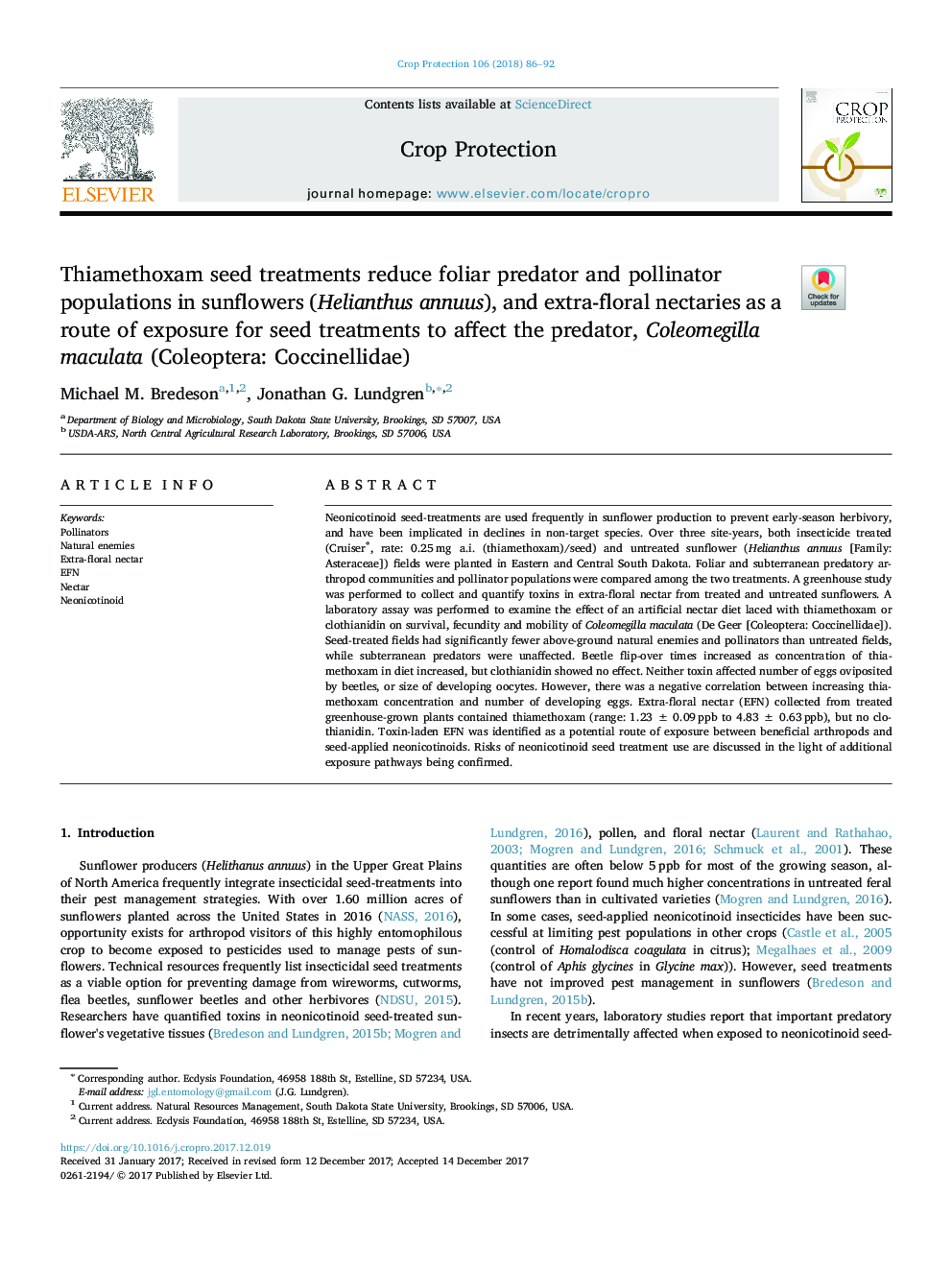| کد مقاله | کد نشریه | سال انتشار | مقاله انگلیسی | نسخه تمام متن |
|---|---|---|---|---|
| 8878245 | 1624281 | 2018 | 7 صفحه PDF | دانلود رایگان |
عنوان انگلیسی مقاله ISI
Thiamethoxam seed treatments reduce foliar predator and pollinator populations in sunflowers (Helianthus annuus), and extra-floral nectaries as a route of exposure for seed treatments to affect the predator, Coleomegilla maculata (Coleoptera: Coccinellida
دانلود مقاله + سفارش ترجمه
دانلود مقاله ISI انگلیسی
رایگان برای ایرانیان
کلمات کلیدی
موضوعات مرتبط
علوم زیستی و بیوفناوری
علوم کشاورزی و بیولوژیک
علوم زراعت و اصلاح نباتات
پیش نمایش صفحه اول مقاله

چکیده انگلیسی
Neonicotinoid seed-treatments are used frequently in sunflower production to prevent early-season herbivory, and have been implicated in declines in non-target species. Over three site-years, both insecticide treated (Cruiser®, rate: 0.25â¯mg a.i. (thiamethoxam)/seed) and untreated sunflower (Helianthus annuus [Family: Asteraceae]) fields were planted in Eastern and Central South Dakota. Foliar and subterranean predatory arthropod communities and pollinator populations were compared among the two treatments. A greenhouse study was performed to collect and quantify toxins in extra-floral nectar from treated and untreated sunflowers. A laboratory assay was performed to examine the effect of an artificial nectar diet laced with thiamethoxam or clothianidin on survival, fecundity and mobility of Coleomegilla maculata (De Geer [Coleoptera: Coccinellidae]). Seed-treated fields had significantly fewer above-ground natural enemies and pollinators than untreated fields, while subterranean predators were unaffected. Beetle flip-over times increased as concentration of thiamethoxam in diet increased, but clothianidin showed no effect. Neither toxin affected number of eggs oviposited by beetles, or size of developing oocytes. However, there was a negative correlation between increasing thiamethoxam concentration and number of developing eggs. Extra-floral nectar (EFN) collected from treated greenhouse-grown plants contained thiamethoxam (range: 1.23â¯Â±â¯0.09â¯ppb to 4.83â¯Â±â¯0.63â¯ppb), but no clothianidin. Toxin-laden EFN was identified as a potential route of exposure between beneficial arthropods and seed-applied neonicotinoids. Risks of neonicotinoid seed treatment use are discussed in the light of additional exposure pathways being confirmed.
ناشر
Database: Elsevier - ScienceDirect (ساینس دایرکت)
Journal: Crop Protection - Volume 106, April 2018, Pages 86-92
Journal: Crop Protection - Volume 106, April 2018, Pages 86-92
نویسندگان
Michael M. Bredeson, Jonathan G. Lundgren,